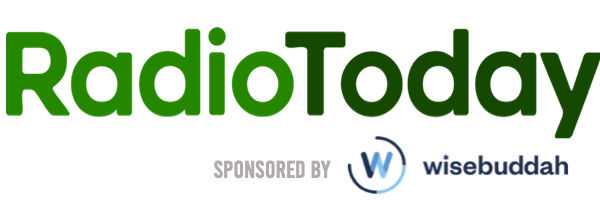
When it comes to radio, folks are all ears!
Radio is a part of our everyday life, whether we’re at work, relaxing, at home, or cruising in the car. It’s like a companion to the rhythms of our daily routine. When you tune in to the radio, it’s like someone is talking right to you. Many folks have a special connection with a radio host they listen to faithfully.
Even though radio is an old-school way of communication, people still tune in every day. The growing number of listeners and their loyalty are what attract advertisers to it.
What is Radio Advertising?
Radio advertising means buying ad slots on well-known radio stations to promote your products and services. Like many others, your business pays for each moment of airtime, and then the station plays your radio commercials for its audience.
This radio advertising concept applies to all types of radio, from traditional to internet stations. There are various ad formats that radio stations can use.
Choosing the right radio advertising strategy can help you get the most out of your investment. Radio ads are more cost-effective than TV or social media video ads because they only need a voiceover to create the commercial.
Main Radio Advertising Types
Radio station ads take on many shapes and sizes. You’ll need to try out different styles to find what works best because each type serves a different purpose. Let’s dive into these various radio commercials to get you started.
Live Reads
Live reads are the most straightforward type of ad. You often encounter live reads on well-loved podcasts, where the host or personality personally delivers your ad message.
The benefit here is that your audience already knows and trusts the host’s voice. If you want to make a distinctive impression and set yourself apart from the rest, a live read is a fantastic way to achieve it.
This type of ads is also the most popular, so much so even lotteries like the online lottery at Lottoland can benefit from its reach. Of course, lotteries should follow a more rules to be able to advertise on radio in Ireland.
Sponsorships
Not everyone is keen on a typical radio ad. There’s another option called sponsorship ads. They operate much like traditional sponsorships and can be used to reach a wider audience or engage with them. Sponsorships might mean supporting segments like traffic or weather updates. You can also choose to sponsor contests or sports updates.
Jingles
Jingles are incredibly memorable because they stay in your mind. Take the McDonald’s jingle, for instance. It’s recognised worldwide, nearly as much as those iconic golden arches.
The link between memory and music has been studied many times, especially how sounds can stir up emotions.
So, why not craft your own catchy jingle and let it shine on the radio?
Testimonials
Listening to someone else’s perspective on a product or service can inspire folks to make a purchase. Testimonial radio ads feature a genuine person sharing their first-hand experience with what your business offers.
Using testimonials boosts your brand’s reliability and increases the likelihood of people having faith in your brand. If you’ve got written testimonials already, you can transform them into impactful audio testimonials with AI voiceovers. Keep the fresh testimonials rolling by using a tool like Trustmary to gather them and repurpose them in your radio ads.
Benefits and Drawbacks of Radio Ads
Radio advertising has been a popular medium for promoting products and services for many years. Like any advertising channel, it comes with its own set of benefits and drawbacks. Let’s explore these:
Benefits of Radio Ads:
- Wide Reach: Radio has an expansive reach that makes it an effective medium for reaching a broad and diverse demographic – an especially helpful asset to businesses that seek to target a broad customer base.
- Local Targeting: Radio stations often cater to specific geographical areas or communities, making radio a useful platform for businesses focusing on regional or local audiences. This can be beneficial when advertising with radio.
- Immediacy: Radio ads can be created and aired relatively quickly compared to other forms of advertising, making it an excellent choice for time-sensitive promotions or events.
- Cost-Effective: Producing a radio ad is generally less expensive than creating a television commercial or running a print ad campaign. This makes it accessible to businesses with smaller budgets.
- Frequency: Radio ads can be repeated frequently, helping to reinforce the message and increase brand recognition among listeners.
Drawbacks of Radio Ads:
- Lack of Visuals: Radio is an audio-only medium, so advertisers cannot use visuals to convey their message. This limitation can make it challenging to showcase certain products or services effectively.
- Limited Targeting Options: While radio allows for some geographic and demographic targeting, it is less precise than digital advertising platforms. Advertisers may struggle to reach highly specific niche audiences.
- Clutter and Competition: Radio stations often air multiple ads back-to-back, leading to a cluttered advertising environment. Your ad may have to compete for attention with numerous others.
- Measuring ROI: Measuring the effectiveness of radio ads can be more challenging compared to digital advertising. It may be difficult to track exactly how many people heard the ad and acted as a result.
- Ad Avoidance: Some listeners may actively tune out during commercial breaks, switch stations, or use ad-blocking features on streaming platforms, reducing the reach of radio ads.
- Limited Time for Message: Radio ads typically have limited time slots (e.g., 15, 30, or 60 seconds), which can be a constraint for conveying complex or detailed messages.
Takeaway
In conclusion, radio station ads offer various options to reach and engage your target audience. Live reads leverage hosts’ trust, sponsorships provide flexibility, catchy jingles create lasting impressions, and testimonials build credibility. However, it’s important to consider the benefits, such as wide reach, local targeting, and cost-effectiveness, as well as the drawbacks, including the lack of visuals and limited targeting options, when deciding if radio advertising is the right choice for your business. Ultimately, the effectiveness of radio ads depends on your specific goals and audience.

